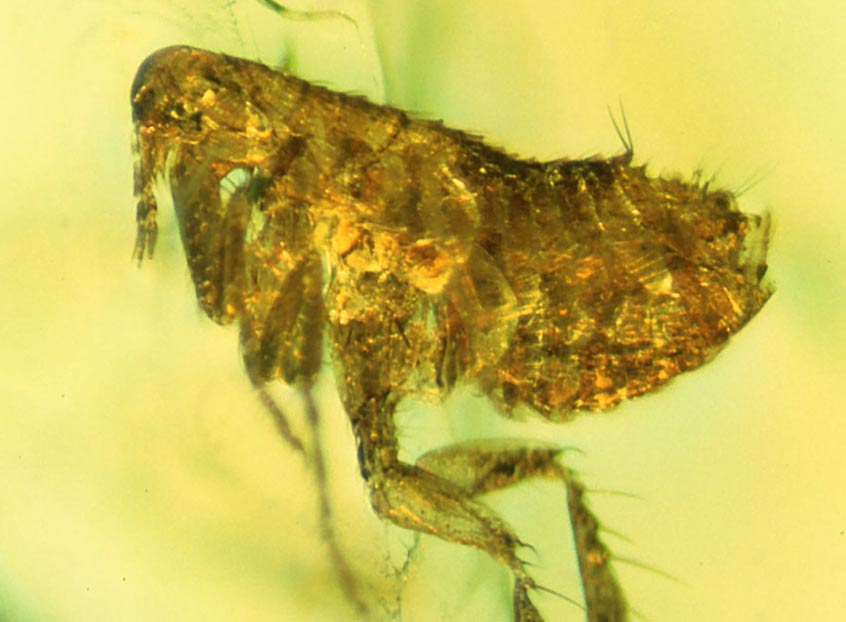

Closely related ancestors of the bacteria that cause the bubonic plague may be millions of years older than the 14 th century, when the disease devastated Asia and killed more than half of Europe’s population. And diseases like it, borne by insects, may have played a role in the mass extinctions of dinosaurs, a researcher says.
Dr. George Poinar Jr., an entomologist at Oregon State University in the United States has possibly identified a previously unknown strain of the plague bacteria. The fossilized bacteria are preserved on a flea encased in amber. If the bacteria do belong to the bubonic plague, then at 20 million years, they are the oldest known evidence for that disease.
Poinar, who specializes in specimens caught in amber, says if the fossilized bacteria are related to the plague’s Yersinia pestis bug, the disease predates the human race and traveled around much of the world.
“If this is an ancient strain of Yersinia, it would be extraordinary,” Poinar said in a news release from Oregon State University. “It would show that plague is actually an ancient disease that no doubt was infecting and possibly causing some extinction of animals long before any humans existed. Plague may have played a larger role in the past than we imagined.”

Scanning electron micrograph of Yersinia pestis, which causes bubonic plague, on a flea (National Institute of Allergy and Infectious Diseases image/Wikimedia Commons)
The flea caught in amber was found in the Dominican Republic, which was a tropical moist forest millions of years ago. It is not certain that the bacteria are related to the plague, but scientists say its shape, size and other characteristics correspond to the modern bug. The bacteria were in the flea’s proboscis and rectum.
“Aside from physical characteristics of the fossil bacteria that are similar to plague bacteria, their location in the rectum of the flea is known to occur in modern plague bacteria,” Poinar said in the news release. “And in this fossil, the presence of similar bacteria in a dried droplet on the proboscis of the flea is consistent with the method of transmission of plague bacteria by modern fleas.”
Poinar has found that flea-like insects in non-amber stone fossils date to the time of the dinosaurs and may have played a role in the dinosaurs’ extinction.

The bacteria on the flea trapped in amber (George Poinar photo)
“In 2008, Poinar and his wife, Roberta Poinar, wrote a book What Bugged the Dinosaurs? Insects, Disease and Death in the Cretaceous,” the Oregon State press release states. “It explored the evolutionary rise of insects around the same time that dinosaurs went extinct. The thesis developed in the book added insect-borne diseases as a likely component, that, along with other biotic and abiotic factors such as climate change, asteroid impacts and volcanic eruptions, led to the extinction of the dinosaurs. Some modern diseases such as leishmaniasis and malaria clearly date to those times.”
Ancient Origins asked Dr. Poinar via e-mail if fleas evolved along with warm-blooded furry animals. “Probably so,” he replied. “However, there are bird fleas and some say that there were feathered dinosaurs, so maybe they did attack some dinosaurs.”
Bubonic plague still infects humans and many species of animals today. It is endemic in many countries. Endemic means it is still present but is under control epidemiologically. Four people in the United States have died from the bubonic plague in 2015 as of late September, the press release says.
In the Middle Ages, three phases of the disease transmitted by rats and fleas swept across Eurasia, killing an estimated 75 million to 200 million people. The three phases are bubonic, which causes buboles or pus-filled sores; septicemic, or infected blood; and pneumonic, or an infection of the lungs.
“Scholars say that religious, social and economic changes caused by the plague altered the course of world,” the news release says.